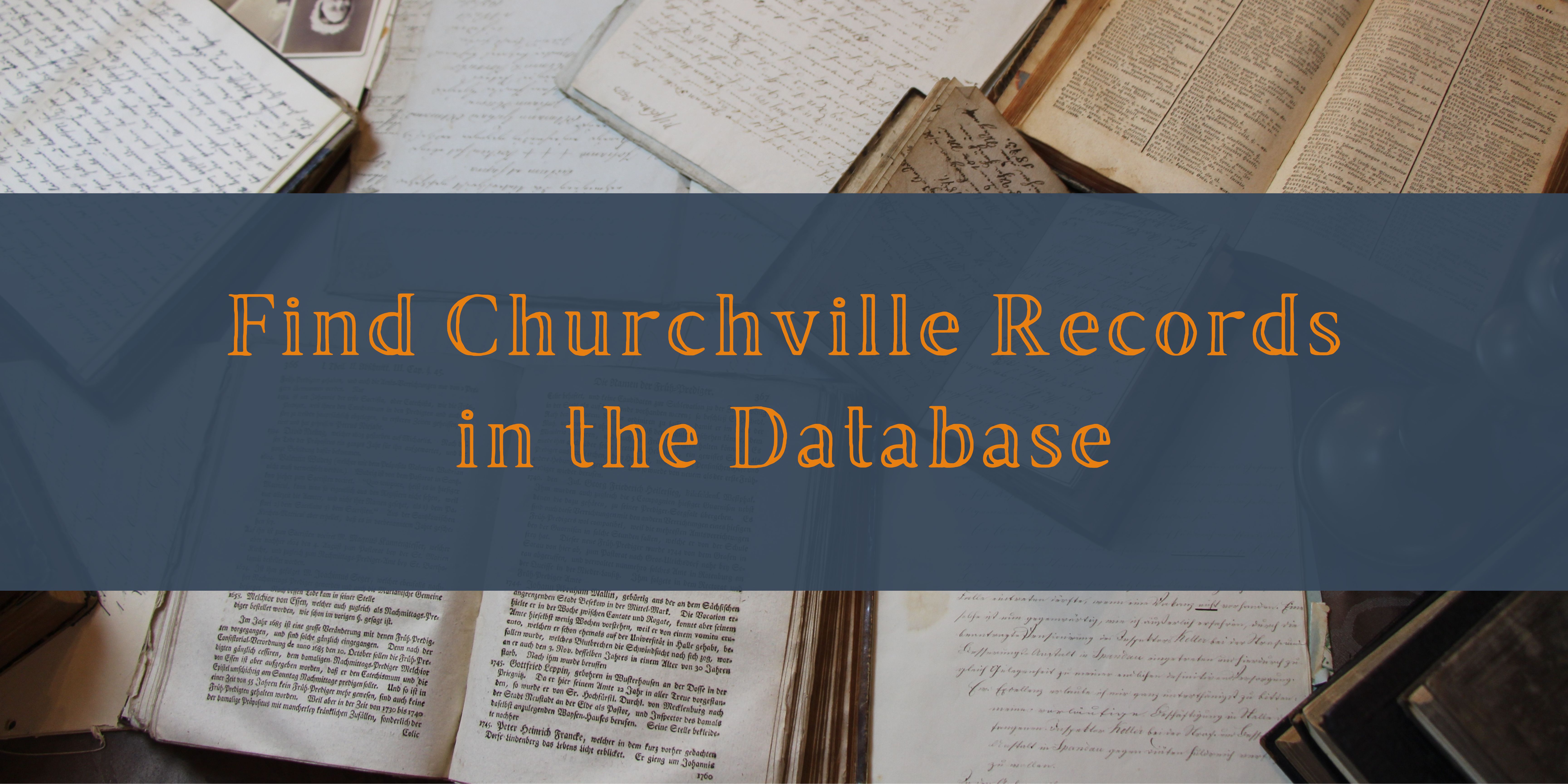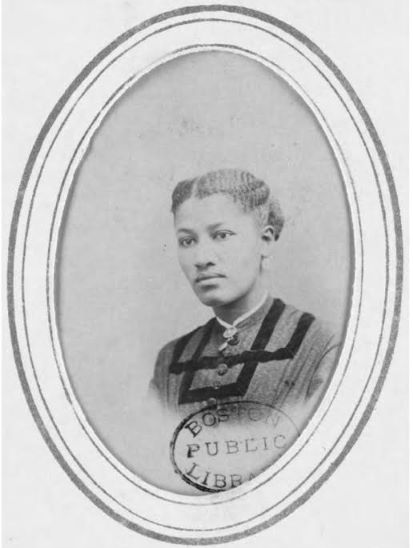The School at Churchville
The earliest documents associated with the school at Churchville relate to the outfitting of the school house, rather than its construction. On November 21, 1867, the Freedmen’s Bureau assistant commissioner for Maryland and Delaware, General E. M. Gregory, issued Special Order 58, directing bureau quartermaster Samuel Wright to supply the school at Churchville with desks. Accordingly, on December 5, 1867, Wright wrote to Nathaniel Cooper, an African-American resident of Churchville and trustee of the school, asking for the size of the school room and the number of desks required. Cooper responded enthusiastically on December 8, telling Wright that the room was 16 by 16 feet, but he neglected to specify the number of desks needed. “In About Tow Weeks we will Be Redey,” he wrote. Cooper also inquired as to when a teacher might be sent.[1]
On December 19, 1867, Wright ordered French Madden, keeper of the Bureau’s school stores in Baltimore, to send ten desks, one teacher’s desk, and six seats to Churchville. The student desks and seats were 3.5 feet long, a size intended to accommodate two students each. Wright informed Nathaniel Cooper on December 23 that the desks would be sent by rail to Aberdeen that same day. In a letter of December 27, Cooper confirmed receipt and again asked when a teacher would arrive, as they hoped to commence school on the 1st of January, 1868. This not being quartermaster Wright’s area of responsibility, on January 2, 1868, he sent a note to the Superintendent of Education, Major W. L. Van Derlip, informing him of Cooper’s request for a teacher.
The documents located do not specify when she arrived, but the teacher who was eventually sent to Churchville was the energetic young Ida S. Marshall, a free-born native of Massachusetts. Marshall had first contacted the Freedmen’s Bureau about a teaching position in March, 1867, writing directly to Commissioner Oliver O. Howard. Her husband, Thomas Marshall, had been General Howard’s personal servant during military operations in South Carolina in 1861. Now Thomas was in ill health, and the two of them were living in Baltimore with few friends. General Howard passed her letter to the Bureau’s education superintendent, Rev. John W. Alvord. He responded to Marshall, explaining that the Bureau did not hire teachers, and advising her of several representatives of freedmen's aid societies that she might contact for such a position. She must have had success with the Baltimore Association, because it was that organization that would support the Churchville school from its establishment until April of 1870.
Ida Marshall’s monthly teacher’s reports (21 in all) range in date from October, 1868, to February, 1871. They depict a school with widely fluctuating enrollment, from a high of 46 students in February, 1869, to a low of 9 in April, 1870. Enrollment tended to peak in December through March. An “industrial school” to teach needlework was begun in November, 1868, continuing into 1871, and a Sabbath school was held throughout her tenure. Marshall reported school days missed due to holidays, severe storms, a death in her family, and to repair damage from a fire in February, 1870.
There is no evidence in the archive of Freedmen’s Bureau records to indicate what books were ordered for or used at Churchville. Marshall may not have been among those teachers authorized by the Bureau to purchase books. The fact that, unlike the letters of some other teachers, her correspondence with the Bureau includes no requests or complaints about a lack of books suggests that the Baltimore Association may have seen to this vital aspect of supply.
Marshall’s correspondence with the Freedmen’s Bureau demonstrates the energy and assertiveness that would see her through a teaching career around the South during the 1870s. In November, 1868, and February, 1869, Marshall sent two letters to the Bureau and one to an actuary in Baltimore regarding the need for a larger school, the current room being overcrowded. She informed her correspondents that the current schoolhouse had been constructed without government help, and that the local people had recently acquired new land for school purposes (“lying between the church and school-house”[2]) and hoped for aid in building a larger structure. Rev. John Kimball, Freedmen’s Bureau education superintendent (who Marshall states had visited the school in September, 1868), responded on February 15 that he would consider aiding the effort if the trustees could give proof of a deed to the new land. Marshall responded, promising to send the deed along as soon as possible. Unfortunately, there is no evidence of the deed having been submitted, or of a new school building being constructed with Bureau materials. A May, 1870, letter from Marshall mentioned that classes were being held outdoors due to inadequate indoor space, so it seems clear no further action was taken.
On June 1, 1869, Marshall wrote to Rev. Kimball of the intention of herself and the trustees to hold a public examination of her school on June 19 of “in the Grove near the school-house.” The students, she wrote, “will be exercised in their studies, music, and declamations. The friends for miles around to be present, and all Loyal Societies in regalia.”[3] Kimball’s presence was requested.
During the planning for this event, on June 14, Ida Marshall again wrote to Kimball, informing him that she had applied to become the U.S. Postmaster at Churchville and asking for his support. In this letter she again invited him to attend, which suggests that he had not responded to her previous letter. She also revealed that she had written to Hugh Lennox Bond, the prominent federal judge and politician, inviting him to attend, as well. “Although this is my third year,” she told Kimball, “my school has never been visited and examined by any gentlemen of position. I feel that the school and myself are entitled to a visit…”[4] There is no evidence that Kimball responded to this letter, either, but Judge Bond certainly attended. The conservative local newspaper The Aegis reported on his oration to a “negro school celebration” near Churchville on June 19, remarking with predictable racism that what he said was unlikely to have penetrated “very deeply into the understanding of the audience.”[5]
In May, 1870, Ida S. Marshall would try her luck with a new education superintendent, Major W. L. Van Derlip. On May 2, Marshall reported that enthusiasm for education was waning at Churchville. She therefore requested a visit from Bureau officials to rally the people. Van Derlip responded that he would be able to send speakers after the 19th of May, and proposed having an event at Darlington as well, after visiting Churchville. Marshall responded that she would receive the bureau delegation on June 6, but Van Derlip reacted to this by telling her that she had misunderstood his previous letter and that he had another commitment on June 6 at the McComas Institute. He claimed that he had mentioned this commitment in that earlier letter. Ida Marshall responded to him that she had no idea of Van Derlip’s previous commitment, and returned his earlier letter to him so he could see for himself that he did not mention it. She announced that she was now coordinating with the trustees to host an event on June 19, and that she hoped Maj. Van Derlip would attend.
By July, 1870, the frustrations of teaching at Churchville had taken their toll on Ida S. Marshall. That month she wrote to Maj. Van Derlip requesting a posting in a state further south, “even Louisiana.”[6] Apparently receiving no response, she traveled home during the summer break to Newport, Rhode Island, where on Aug. 9 she penned a letter to Rev. John W. Alvord, Freedmen’s Bureau education superintendent and the man who had advised her back in 1867. In that letter, she cited declining salary, exposure, and “other difficulties,” as her reasons for wanting to teach someplace else. She repeated her desire to relocate to somewhere farther South to continue her work.[7] She was unsuccessful in her efforts, however, and was still teaching at Churchville in early 1871.
In April, 1870, Ida Marshall's sponsoring organization shifted from the Baltimore Association (which was ceasing operations) to the New England Freedmen’s Aid Society. Ida S. Marshall left the school shortly after February, 1871. That month, her final monthly report states that thenceforward the school would be “supported by the county, with a county teacher.”
To date, no deed has been found that might provide the names of trustees (besides Nathaniel Cooper), the name of the land donor or seller, or clues to the precise location of the school. The 1866 Martenet map of Harford County denotes three school houses in or immediately around the small town of Churchville, but none are differentiated as “colored schools” as might be expected on a map of this era. The 1878 Martenet map does not denote these three school houses, but does indicate a “School Ho (Cold)” more than three miles west of Churchville on the road to Bel Air. While far from the town, it is still within the boundaries of the Churchville subdistrict of the county. However, that location does not appear to be very close to a church, as Ida Marshall’s November, 1868, letter suggests the school was.
In summation, the story of the Churchville school as contained in the Freedmen’s Bureau files is that of the energetic teacher of a small, rural school being somewhat neglected by the Bureau. This lack of responsiveness was, however, built into the structure of the Bureau in Maryland. In former Confederate states, where the Bureau’s operations were more extensive and their organization more elaborate, individual schools might look to support from local sub-assistant commissioners or agents for their respective counties. In Maryland, the Superintendent of Education for Maryland and Delaware (and later the D.C. Superintendent of Education), was personally responsible for every school for freedpeople in the District of Columbia, Maryland, and Delaware. No wonder, then, that they often failed to provide efficient communication and ideal support to individual schools, especially small ones like Churchville.
By James Schruefer
[1] Nathaniel Cooper to Samuel Wright, 8 Dec. 1867, Letters Received, Chief Quartemaster and Disbursing Officer, Records of the Field Offices for Maryland and Delaware, RG105, National Archives.
[2] Ida S. Marshall to John Kimball, 10 Nov. 1869, Letters Received, Records of the Superintendent of Education for the District of Columbia, RG105, National Archives.
[3] Ida S. Marshall to John Kimball, 1 June 1869, Letters Received, Records of the Superintendent of Education for the District of Columbia, RG105, National Archives.
[4] Ida S. Marshall to John Kimball, 14 June 1869, Letters Received, Records of the Superintendent of Education for the District of Columbia, RG105, National Archives.
[5] The Aegis, 25 June 1869, p. 2.
[6] Ida S. Marshall to W. L. Van Derlip, 18 July 1870, Letters Received, Records of the Superintendent of Education for the District of Columbia, RG105, National Archives.
[7] Ida S. Marshall to John Alvord, 9 Aug. 1870, Letters Received, Records of the Superintendent of Education for the District of Columbia, RG105, National Archives.


